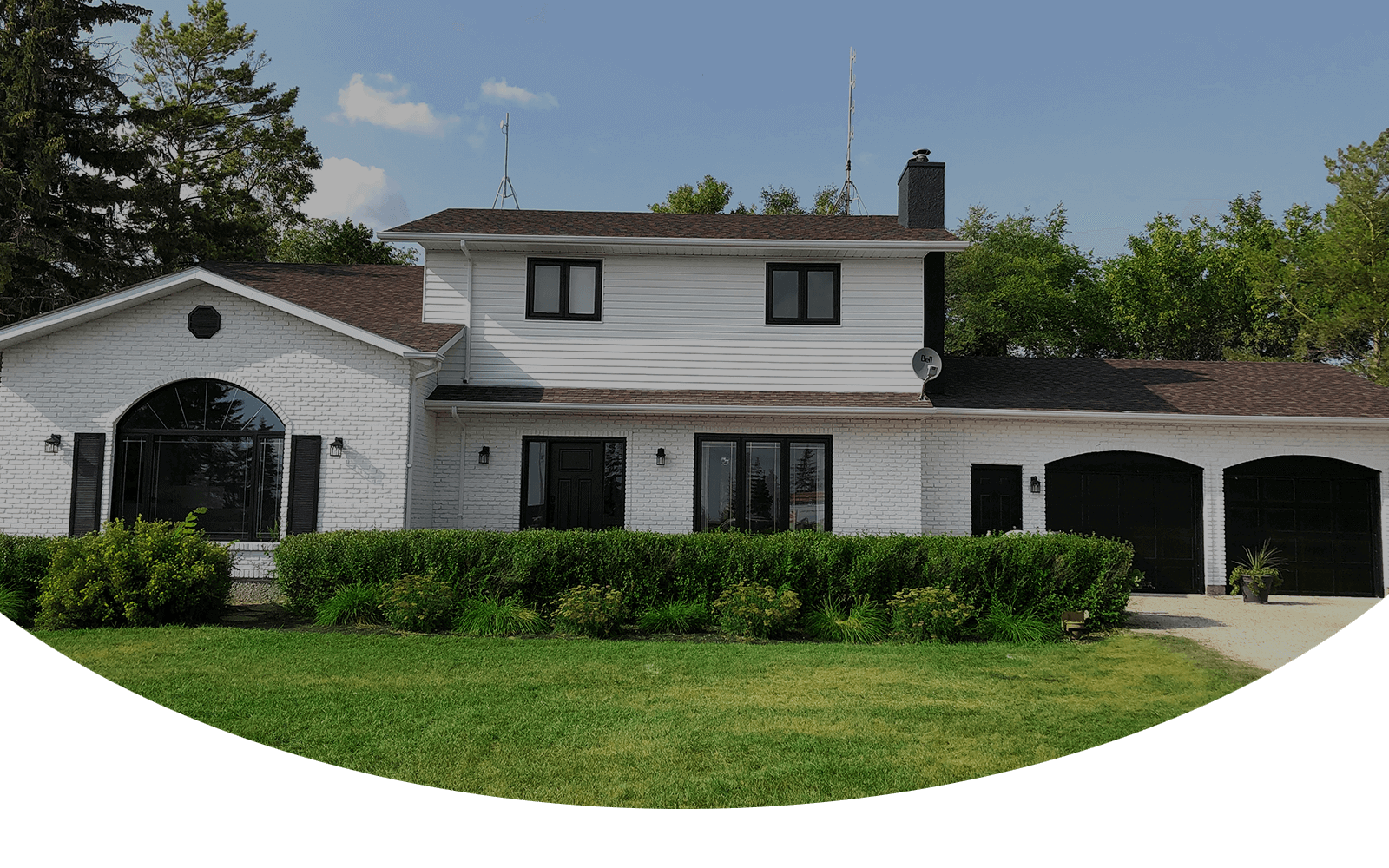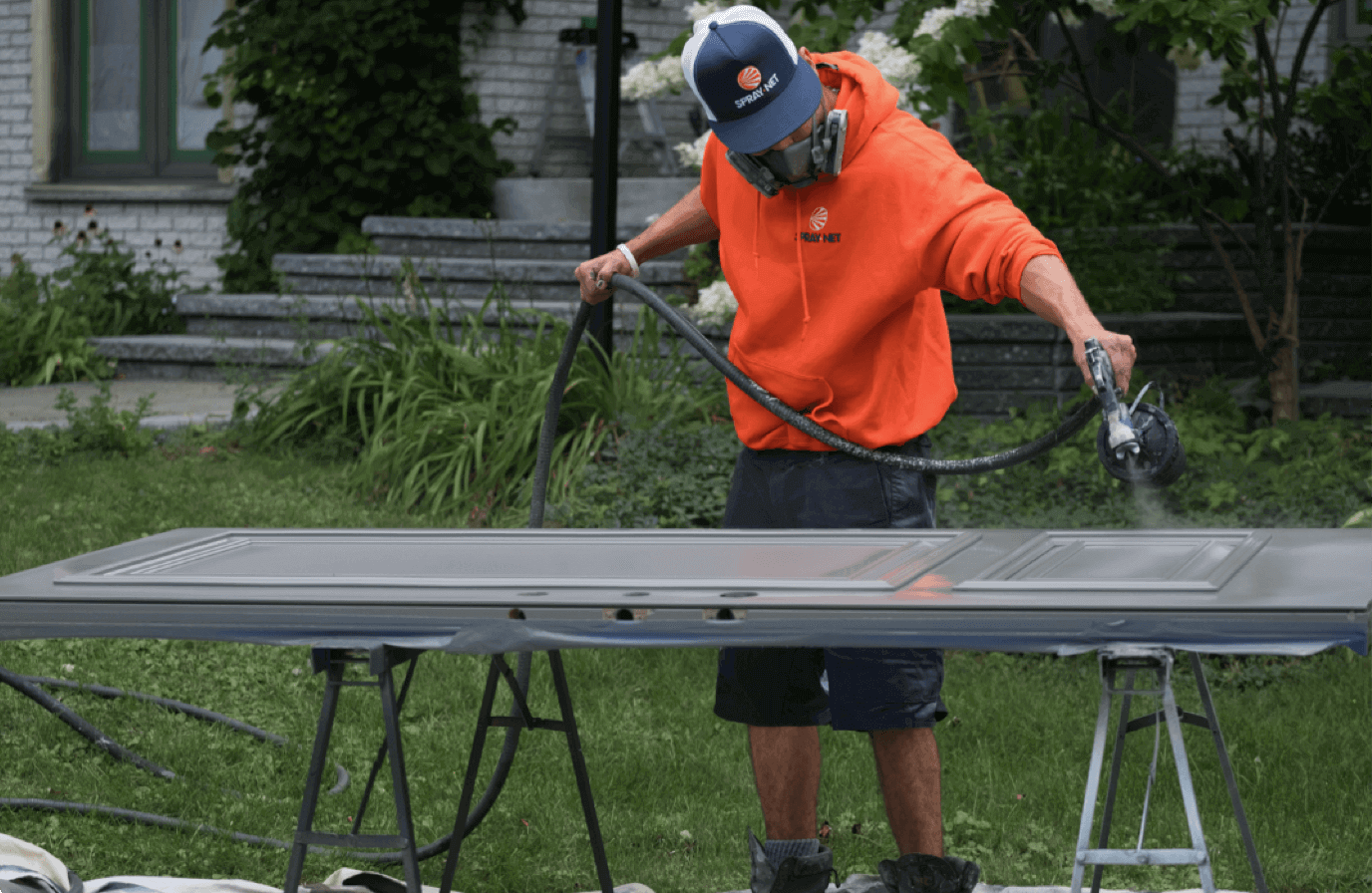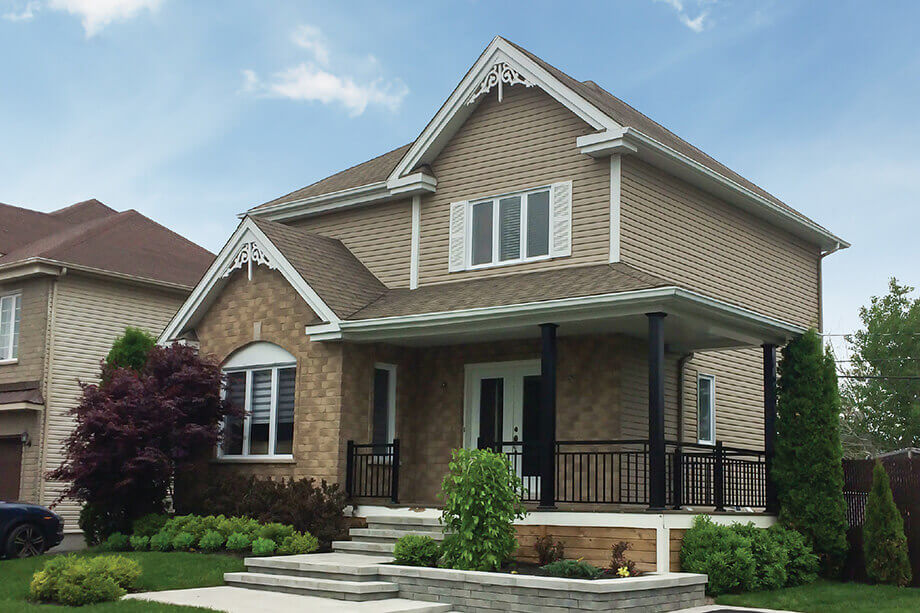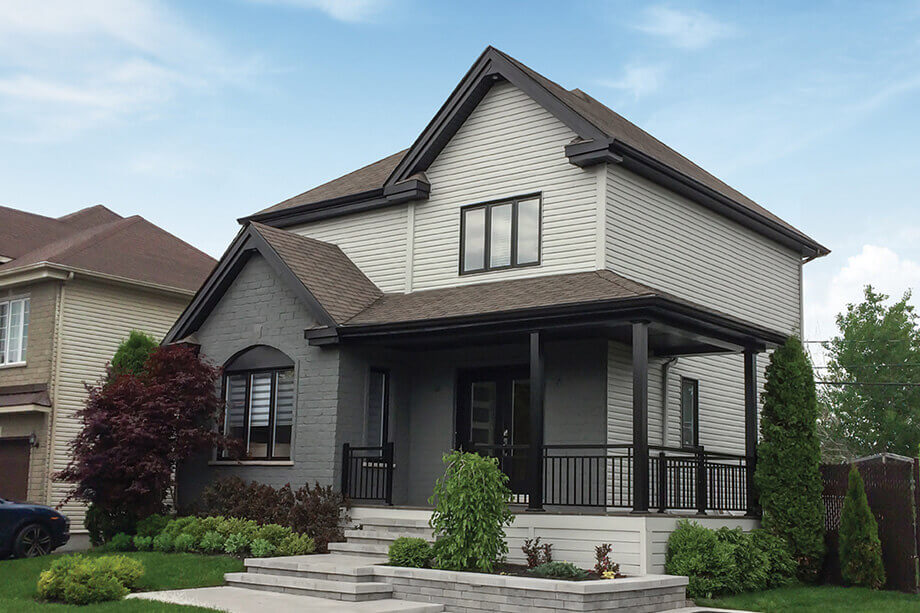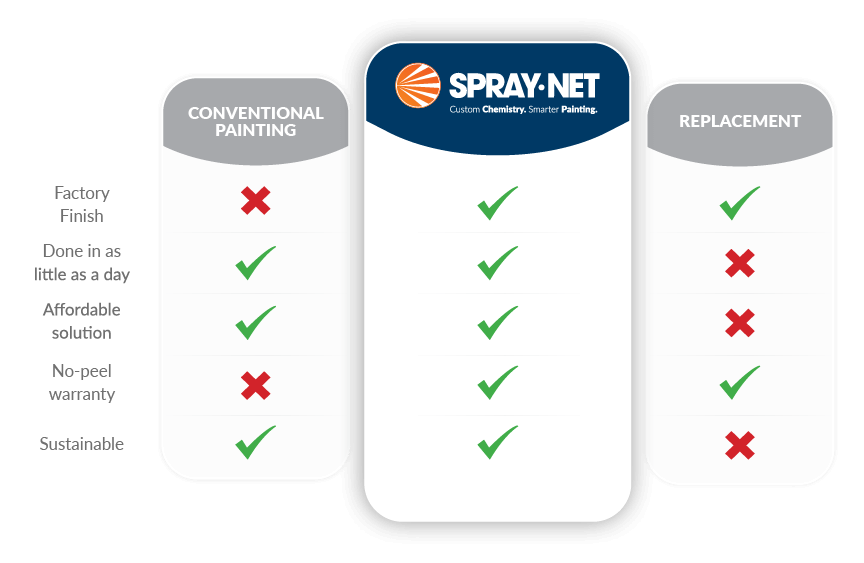
Spray-Net bridges the gap between painting & replacing.
Imagine if you could paint your home without the headaches and get the beautiful, long-lasting finish of brand-new siding, doors and windows? Now, you can get both in a whole new kind of exterior painting service.
See why we’re differentThe most customized paint job on the market.
Imagine if you could paint your home without the headaches and get the beautiful, long-lasting finish of brand-new siding, doors and windows? Now, you can get both in a whole new kind of exterior painting service.
Learn more
Save up to 75% of replacement costs.
“We were going to replace our siding until we found Spray-Net & discovered it was half the cost!”
+ 20K
homes revamped.
+ 21M
sq ft of siding sprayed.
+ 140K
gallons of paint formulated.
A complex process for us, a simple promise to you.
There’s one thing we obsess more about than formulating paint, and that’s making sure you fall in love with your home all over again.
Factory Finish
We’ll deliver a finish that looks & lasts like it came off the assembly line.
Quick & Cost-Effective
No matter the project, we’ll transform your home quickly and for a fraction of the cost of replacement.
15-Year Warranty
All Spray-Net revamps are backed by our 15-year warranty against peeling... without any red tape.
No Surprises
You’ll know exactly what we’re painting & how much you’re paying. No curveballs once we’re on site.
Sustainable Reno
By revamping instead of replacing, we reduce waste by keeping substrates in good condition out of landfills.
Don’t just take our word for it.
Hear from some of our happy customers!



